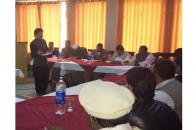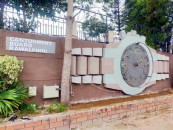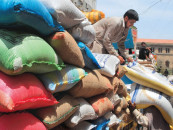Mysterious murders
In Balochistan, killings of various kinds continue. The latest victim is the PPP-Sherpao’s provincial leader.
In Balochistan, killings of various kinds continue. The latest victim is the PPP-Sherpao’s provincial leader Mustafa Khursani, shot dead by armed motorcyclists in his native town of Soorab. It is hard to determine if there is a pattern to the killings in the province. Nationalist politicians have been on the death list — but then so have teachers, settlers from outside Balochistan and personnel linked to security forces. It is impossible to know if all these killings are tied together by some invisible rope — or whether they are carried out by different groups acting independently of each other. But the end result is the same: violence continues across Balochistan and there is no sign at all that it is diminishing, and it increases the alienation towards the federation that many in the province feel. The passage of a package for Balochistan through parliament last year had raised hopes of an accord and a new expression of willingness by the province to co-exist harmoniously within the Federation. This, sadly, has not happened. Accusations continue to be made that events in Balochistan are being orchestrated by India. Perhaps there is some element of truth in this but the principal fact we should consider is that any role played from across the border capitalises on the tensions that simmer on in the country’s largest province. In any case India has quite vociferously denied any involvement in the violence that has engulfed Balochistan so we should either present evidence on this score or move on.
There is a danger the floods will exacerbate the alienation. A muted row has already broken out between Sindhi and Baloch politicians over the breaching of dykes along the Thori Canal in Sindh that led to Jaffarabad district being inundated by floodwater and that this was done to prevent lands of important people in Sindh from becoming flooded. It is wise to turn back the pages and recollect how Cyclone Yenyim in 2007 left behind not only a trail of destruction running through Balochistan but also one of anger. This could happen again. Rage is a factor in the violence we see in the province and there is a real risk that feelings of neglect by the Centre could drive these on faster and harder, with still more dangerous outcomes in a province already disfigured by hatred.
Published in The Express Tribune, August 27th, 2010.




















COMMENTS
Comments are moderated and generally will be posted if they are on-topic and not abusive.
For more information, please see our Comments FAQ